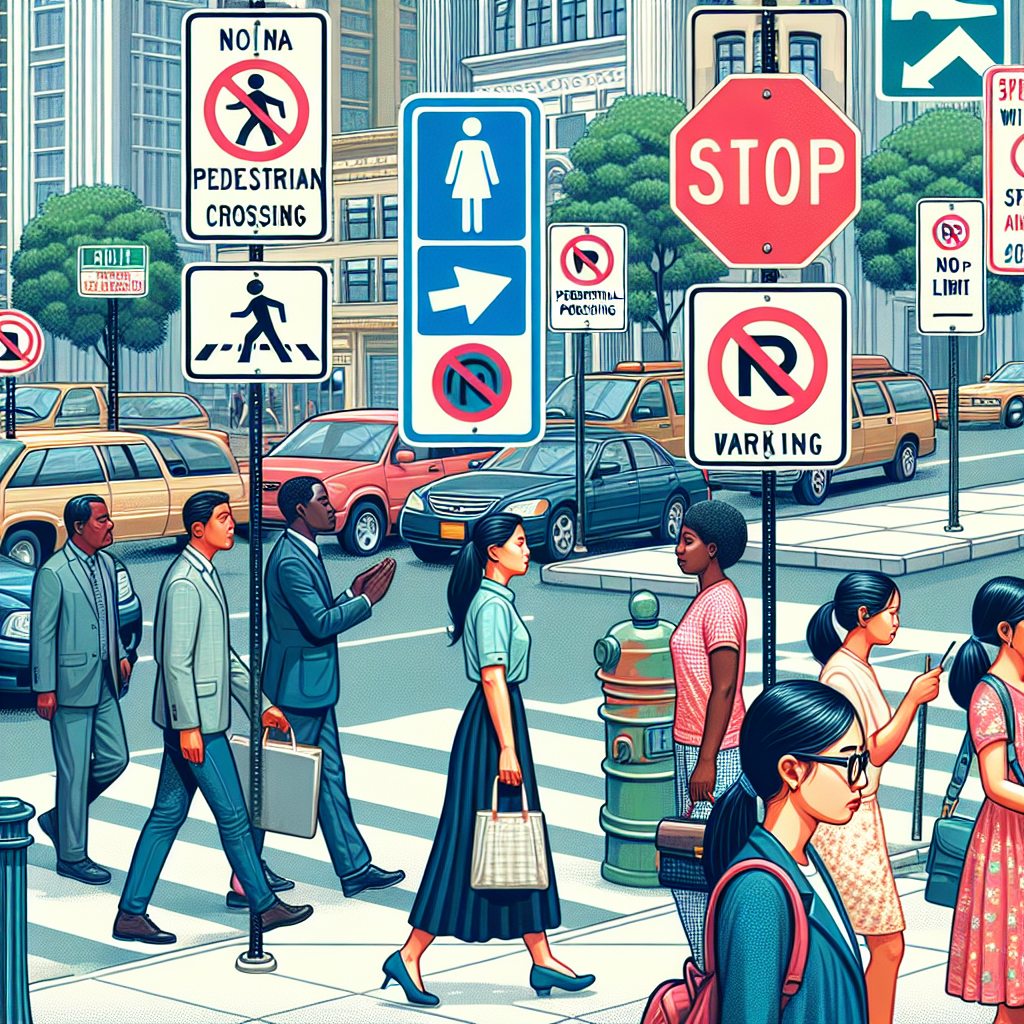-
Table of Contents
Being Aware of Road Signs and What They Mean

Driving is an essential part of our daily lives, and road signs play a crucial role in ensuring our safety on the roads. These signs provide valuable information, warnings, and instructions to drivers, helping them navigate through various traffic situations. Understanding and being aware of road signs and what they mean is not only a legal requirement but also a vital skill that can prevent accidents and save lives. In this article, we will explore the importance of road signs, their meanings, and how they contribute to road safety.
The Importance of Road Signs
Road signs are designed to communicate important information to drivers quickly and effectively. They serve as a universal language that can be understood by drivers from different regions and countries. Here are some key reasons why road signs are important:
- Enhancing Road Safety: Road signs provide essential information about potential hazards, speed limits, and directions, helping drivers make informed decisions and avoid accidents.
- Regulating Traffic: Road signs help regulate traffic flow by providing instructions on when to stop, yield, or give way. They also indicate the right of way at intersections, ensuring smooth and organized traffic movement.
- Providing Guidance: Road signs guide drivers to their destinations by indicating directions, distances, and landmarks. They are especially helpful for drivers in unfamiliar areas or when navigating through complex road networks.
- Warning of Hazards: Road signs warn drivers about potential dangers ahead, such as sharp turns, slippery roads, pedestrian crossings, or animal crossings. Being aware of these signs allows drivers to adjust their speed and behavior accordingly.
Understanding Road Sign Categories
Road signs can be categorized into three main types: regulatory signs, warning signs, and informational signs. Each category serves a specific purpose and has its own set of symbols and colors.
1. Regulatory Signs
Regulatory signs are used to control and regulate traffic behavior. They inform drivers about laws and regulations that must be followed. Here are some common examples of regulatory signs:
- Stop Signs: These signs are octagonal in shape and are used to indicate that drivers must come to a complete stop at the marked line or before entering an intersection.
- Yield Signs: Yield signs are triangular in shape and indicate that drivers must yield the right of way to oncoming traffic or pedestrians.
- Speed Limit Signs: These signs indicate the maximum speed limit allowed on a particular road or highway. They are usually circular with a red border and black numbers.
- No Entry Signs: No entry signs are used to indicate that drivers are not allowed to enter a particular road or area. They are typically circular with a red border and a white background.
2. Warning Signs
Warning signs are used to alert drivers about potential hazards or dangerous conditions ahead. They are usually diamond-shaped with a yellow background and black symbols. Here are some common examples of warning signs:
- Curve Ahead: These signs indicate that there is a curve or bend in the road ahead. They help drivers anticipate the change in direction and adjust their speed accordingly.
- Slippery Road: Slippery road signs warn drivers about road conditions that may be slippery or hazardous, such as during rain, snow, or ice. Drivers should reduce their speed and exercise caution.
- Pedestrian Crossing: These signs indicate the presence of a pedestrian crossing or school zone. Drivers should be prepared to stop and yield to pedestrians.
- Animal Crossing: Animal crossing signs warn drivers to watch out for animals that may cross the road, such as deer or livestock. Drivers should slow down and be prepared to stop if necessary.
3. Informational Signs
Informational signs provide drivers with useful information about services, facilities, and directions. They are usually rectangular or square-shaped with a white background and black symbols. Here are some common examples of informational signs:
- Exit Signs: Exit signs indicate the upcoming exit on a highway or freeway. They provide advance notice to drivers, allowing them to change lanes and prepare for the exit.
- Service Signs: Service signs provide information about nearby facilities, such as gas stations, rest areas, hospitals, or food outlets. They help drivers plan their stops and find necessary amenities.
- Directional Signs: Directional signs provide guidance and indicate the route to specific destinations, cities, or landmarks. They are especially helpful for drivers traveling in unfamiliar areas.
Staying Updated with Road Sign Meanings
Road signs and their meanings may vary slightly from country to country or region to region. It is essential for drivers to stay updated with the specific road sign meanings in their area. Here are some ways to ensure you are aware of road sign meanings:
- Driver’s Handbook: Consult your local driver’s handbook or manual, which usually contains detailed information about road signs and their meanings. It is a valuable resource for both new and experienced drivers.
- Driving Courses: Consider enrolling in a defensive driving course or a driver’s education program. These courses often cover road signs and their meanings in detail, helping you become a more knowledgeable and responsible driver.
- Online Resources: There are numerous online resources, websites, and mobile applications that provide information about road signs and their meanings. These resources can be easily accessed and are often updated with the latest information.
Conclusion
Being aware of road signs and what they mean is a fundamental skill for every driver. Road signs play a crucial role in enhancing road safety, regulating traffic, providing guidance, and warning drivers about potential hazards. Understanding the different categories of road signs, such as regulatory signs, warning signs, and informational signs, is essential for interpreting their meanings correctly. By staying updated with road sign meanings and being vigilant on the roads, we can contribute to a safer and more efficient driving experience for everyone.



